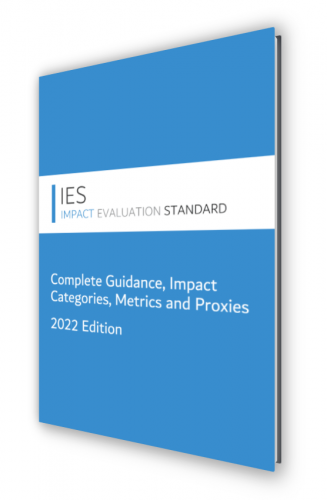Neil MacDonald, Chief Executive Officer, Thrive
Tell us about Thrive and your role as CEO
At Thrive, we believe in the power of businesses and large organisations to significantly impact the sustainability agenda. We are helping drive the movement for companies to focus less on pure shareholder value and instead, to also concentrate on the value they can create for employees and communities – this is imperative to a sustainable future.
As a technology vendor, we help organisations better capture what they're doing around corporate responsibility, ESG (Environmental, Social and Governance), and social value and the broader value of that. Then, when organisations really see a positive return on this, they are incentivised to invest further in the sustainability agenda.
My role as CEO at Thrive is building the right team, creating an organisation that people want to work for and building an organisation that customers want to work with.
What challenges do clients face when measuring and reporting their social value impact?
So, primarily, almost without exception, when we start collaborating with a customer, they do either a reasonable amount or an exceptional amount of social good. They are doing different activities, but their challenges are threefold.
They need to understand what can be considered social value. Many companies are stuck in the traditional corporate response, the CSR (Corporate Social Responsibility) mindset of volunteering days and charity donations. When we explain what social value is and how they can create it, there is this eye-opening moment when they realise that social value is a much broader definition.
The second is how they centralise their commitments. Typically, this type of information resides in spreadsheets and different departments, and it is just a bit of a mess. So how do you get that into one place so you can easily capture and measure what you are doing and demonstrate it to others?
Then the challenge, once they go through that process, is to ensure consistency and standardisation of what they are reporting so they can compare year on year.
That is where social value measurement tools like ours and frameworks of social value measurement come in.
There are many impact reporting tools in the market. So, what is different about Thrive, and how does it differ from others?
It is an excellent question because there's a proliferation of providers in the marketplace. So, Thrive, as a software tool, has three primary differentiators.
Looking at it from a very functional perspective, we are one of the market's most tailorable and configurable systems. That means when people deploy our system, it will fit their organisation and the elements that are important to them very well. As a result, we have SME (Small and Medium-sized Enterprise) clients, tier-one clients and public sector clients.
The second differentiator is that the Thrive platform is broader than anything else in the marketplace. While we are talking today about social value capture and reporting, that is only one part of our platform. Organisations can manage a range of CSR or social value activities with our comprehensive set of modules. For example, we have a donation and grants management module for organisations that support a community fund, or they might use our employee volunteering management module.
The last thing is the Impact Evaluation Standard (IES) framework. The framework of metrics and proxy values that are built-in to the Thrive software allows users to make robust and defensible social value calculations. Our framework is entirely focused and aligned with the government's Social Value Model.
Can you tell us a bit more about the Impact Evaluation Standard (IES) framework?
A few years ago, we were asked to provide a framework. At first, we held off as we thought the information was already available and in place. So, our focus was to give customers the tool to capture their social value commitments. But then, people said they had various concerns with existing frameworks. For example, some had unwieldy lists of metrics, which made them hard to use. Others needed to be more transparent with how the valuations were derived, creating confusion in the marketplace.
The other important thing was that central Government created the Social Value Model in support of PPN06/20. PPN06/20 identified what social value means to 'UK (United Kingdom) PLC'. So, we realised that there was a need to have a framework that aligns directly with this to enable organisations to measure their social value in line with the Social Value Model.
We align with the Social Value Model themes, policy outcomes and ‘MACs’, and directly incorporate the fifty-two-reporting metrics. We are the only framework to do that. So, it is instantly recognisable as metrics from the Social Value Model. This is incredibly helpful for organisations that need to deliver social value outcomes in the way the government recognise them.
We also added additional sub-metrics - practical metrics often more usable than the Social Value Model metric but still aligned with it and, importantly, we have added robust, defensible and transparent proxy values which are optional for users to adopt.
We are demystifying social value, because social value can be vague, that's why people don't fully understand it. Whatever it is, the way you tell your story online can make all the difference.
Can a client use other frameworks, and can they collaborate with you?
Yes! We provide the IES metrics and proxy values built-in to our system for our users' convenience. However, the Thrive software platform is flexible and allows users to add-in any other metrics from other frameworks they need to use if they have permission. They can also add other internal metrics they might want to capture for their corporate reporting. So, for example, if a client came to me and said, 'we have ten metrics that we use and don't want any framework'. They can take Thrive as an empty box and build those into the system themselves.
Most of our customers will use the IES for their overall corporate reporting, but we are different in the marketplace because we are not precious and will not mandate that you use the IES in our system.
How do you arrive at the pound and pence figures, and how can people be confident that these are relevant and accurate? What are the 'economics' behind it, and do the values differ between UK regions or a more localised level or are they the same?
In terms of the pounds and pence values, unfortunately, the UK currently has no accreditation body for social value. As a result, no organisation can sign off on proxy values, and there is no publicly published list of proxy values.
So, the way to provide something valuable to the industry is to have transparency, consistency, and rigour to those proxy values. In the IES, all proxy values are derived using the same consistent approach, following the UK government's guidance. It follows the HM Treasury Green Book recommended approach of cost-benefit analysis (CBA). So, every proxy value will be derived using the same methodology; we will break it down into the economic, fiscal, social, and wellbeing components. We also explain how every proxy is derived.
This whole field is still emerging and evolving, and some aspects still don't have fantastic data available. For example, in the 2022 version of the IES, there are over a hundred metrics, but only forty-six have proxy values. So, for some, you cannot develop proxy values. For example, if they are percentages - but for the rest, if there's not a robust publicly available data set, we will not use it. So, we only have derived proxy values where we are happy with the available data.
Also, it's essential to understand that it is not just us making up the numbers. We have a Steering Committee of heavy hitters from the social value landscape - consultants, people from the industry, and academics who check and verify everything the IES produces.
So, it's about transparency and rigour - all our users are provided with this consistent approach which follows government guidance.
Photo By: Chris Liverani on Unsplash
What trends have you seen with the clients you work with? Where are the gaps in their social value commitments?
In current trends, we have a specific lens through which we're looking at social value - people are coming to us as a technology provider. So, we see an increase in software adoption. Because people have gone, “we have a challenge; we need to report all this centrally and make defensible social value calculations, but that is not easy”. So, adopting software tools, whether ours or someone else's, to address these challenges is on the up.
The other thing we see is around the culture of social value across organisations. Occasionally, organisations still leave social value to the bid team, and the bid team are left pulling their hair out trying to find the information. Whereas best practice is that organisations achieve buy-in across the entire organisation by conveying to individuals in various parts of the organisation why it is essential to their role, the organisation, and the wider community. Creating an organisation-wide 'social value culture' is improving across many organisations.
Larger clients are also focusing more on better collaboration with their supply chains. It's like, “okay, so we've now got our house in order internally; how do we better collaborate with our supply chain to differentiate ourselves and make a better impact?” That's the big trend that we see with bigger organisations.
“The way social value reporting has evolved in recent years has resulted in many organisations trying only to chase ‘big numbers’ and significant pound values, which drives bad behaviour - often the needs of clients and communities are ignored. The IES has been set up to try to drive better behaviour through a more well-rounded approach to and more consistent behaviour. ”
How can we help
At Samtaler, we understand the importance of your social value commitment. You’re here because you care about your business's impact on society and want to improve. We want you to succeed, and we know from experience that achieving social value requires skill, strategy, and support.
To find out how we can help, send an email to hello@samtaler.co.uk
Sign up for The Social Value Files for inspiration and practical ideas to create social value for your business.
If you liked this post please share.



